Answers to the questions most frequently asked by hay fever sufferers
- What is hay fever?
- What is the cause of the hay fever?
- Is hay fever very common?
- What exactly is a pollen?
- Can all plants cause hay fever?
- What are the pollens that most frequently cause allergy?
- Can any one suffer from hay fever?
- How are the pollen counts performed?
- How does the weather affect the pollen count?
- Which is the threshold of pollen counts to induce hay fever symptoms?
- What is the purpose of pollen counts?
- How can I find out about pollen concentrations?
- How can I avoid allergenic pollens?
What is hay fever?
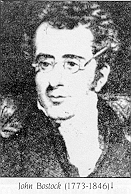
It is a rhinoconjunctivitis caused by allergy to pollens. The first scientific description of this disease was made by an English physician, John Bostok who in 1819 reported to the «Royal Medical Society» the existence of an affliction of the eyes and nose that only appeared during the summer. He performed a clinical description of his own case. It is curious that this doctor, was only able to find 28 patients with the same symptoms in all England. As fresh hay was thought by Bostok to be the main cause of this disease, he named it hay fever, an erroneous term, that however continues to be used by every body.
What is the cause of the hay fever?

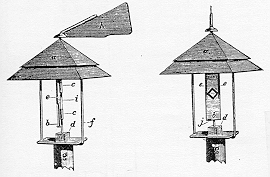
Over half a century went by until another English doctor, Charles Harrison Blackley, published, in 1873, that the cause of this illness was produced by grass pollen and not by hay. Blackley, who was really ahead of his time, designed a pollen sampler made up by a wind vane on which he attached a glass slide previously coated with glycerine. Every 24 hours he took down the slide and examined its contents using an optical microscope, identifying and measuring the different types of pollens that had remained stuck on in the glycerin per cm2. He found that during the months of June-July (the period of his patients' symptoms) there was grass pollen in the atmosphere in Manchester. He also checked that the hay fever symptoms could be reproduced with his patients in his laboratory by placing small amounts of grass pollen into their noses. These patients, contrary to the rest of the normal population, developed a cutaneous response with wheals and erythema within minutes of applying grass pollen grains to their previously scarified skin. In the first two decades of this century, thanks to the discovery of skin tests, the hay fever or pollinosis was recognized as an allergic disease of early hipersensibility and mediated by a serum factor which was called "reaginas".
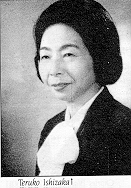
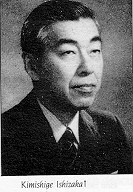
In 1966 a married couple of Japanese scientists resident in the USA, Teruko and Kimishige Ishizaka demonstrated that the "reaginic" antibodies corresponding to a type of immunoglobulin different from those previously known (IgG, IgM, IgA, IgD) naming it IgE. These authors demonstrated that, on the contrary to the normal population, in the serum of patients allergic to pollens it was possible to observe high concentrations of IgE antibodies directed against glicoproteins that were present in the interior of the pollen grains. They proved that these IgE antibodies were responsible for the allergic disease.
Is hay fever very common?
Yes it is. It is curious that this affliction considered originally as very rare (a privilege of the aristocratic class according to Blakley) turns out to be the immunologic disorder most common in humans. About 20% of the population show positive skin tests to pollens, about 10% of the population show clinical symptoms and about 5% of the population actually receive treatment for this reason. The cause of this increase in the frequency of hay fever is unknown. Pollution and other factors present in modern cities are probably contributors. The fact is that this disease is twice as frequent in modern urban areas than rural areas in spite of the fact that in rural areas the airborne pollen concentrations are much higher.
What exactly is a pollen?
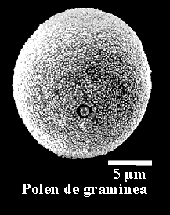
Pollens are grains much smaller than a point of a needle that contain spermatic cells. Obviously, pollen are produced by the male reproduction system of flowers and its aim is to transport this spermatic cells to the female reproduction system of flowers to produce the fertilization and fruit. One must take into account, that only one plant can produce thousands and thousands of pollen grains whose aspect when seen together (e.g. inside the flowers) is like a yellow dust, on the contrary when the pollen is in the air it is invisible to the human eye and it is necessary to examine it by microscope.
It is curious how patients tend to confuse pollens with the white fluff that appears in May. In truth these are no more than seeds from poplars and willows. Normally patients attribute their symptoms to this visible white fluff instead of the invisible grass pollen that usually appears at the same time.
Can all plants cause hay fever?
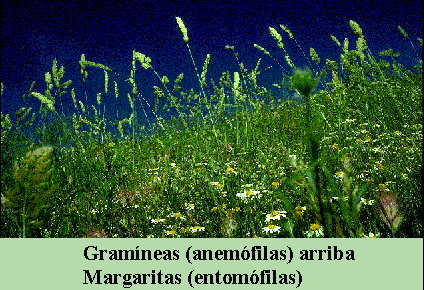
No. Only the plants that pollinate through the air (anemophilous plants) are responsible for the atmospheric load of pollens. On the contrary the entomophilous plants (that are pollinated by insects) do not cause hay fever as its pollen cannot be inhaled in natural conditions by patients. 80% of plants are entomophilous and are characterized by bright and aromatic flowers to attract the attention of insects. Examples of entomophilous plants are roses, carnations, geraniums¼ etc. The flowers of anemophilous plants are hardly noticeable as they are the grasses that grow on the sides of the road.
What are the pollens that most frequently cause allergy?
Considering allergenic pollens as a whole in Spain grass pollens are the most important cause of hay fever followed by olive pollens and Parietaria pollens (a weed). However olive is the first cause of hay fever in some places in the south of Spain (e.g. Jaén, Córdoba, Granada), and the same occurs with the Parietaria in the Mediterranean coast (in these places grasses are the second cause of pollinosis). Other important allergenic pollens in Spain are Plantagos (May-June), Chenopodium and Artemisia (August-September). In the last few years the clinical relevance of some tree pollen such as Cupressus (Jenuary-March) and Platanus (March-April) is also increasing. Betula pollen is one of the most important causes of hay fever in Scandinavian countries, fortunately its pollen concentration in Spain is only limited to the north of Spain and with a moderate presence (March). Ambrosia is the most important cause of pollinosis in USA, luckily at the moment its presence in Spain is very rare. However this weed in the last few years has been spreading from the center of Europe to the south affecting also the north of Italy and France being in these places a cause of summer pollinosis. See Allergenic Pollens.
Can any one suffer from hay fever?
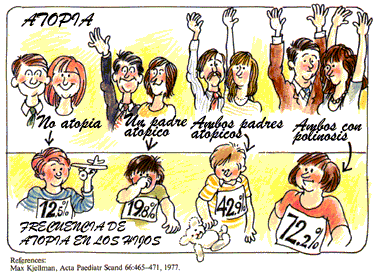
No, the risk of developing hay fever is a consequence of two simultaneous factors, an hereditary atopic disposition and exposure to allergenic pollens. The age of onset of this disease, in males, peaks about 10 years and in females, peaks between 10-20, although this disease can appear in any moment. However the maximum frequency of this disease is observed between 14-24 years of age.
When the disease starts, the duration normally is for many years, although the severity of the seasonal symptoms may vary from year to year depending on the interannual variation of airborne pollen concentrations. In a few cases (less than 8%) it is possible to observe an early spontaneous remission, on the contrary for between 7-30 % of hay fever patients the seasonal rhinitis is complicated with a seasonal bronchial asthma. Finally the majority of patients experience a slow remission of the disease from the age of fifty.
How are the pollen counts performed?
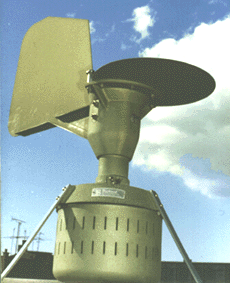
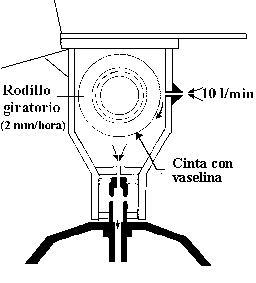

There are many different collectors to perform the pollen counts. In Europe the most used and efficient is the volumetric sampler type Hirst (Burkard® or Lanzoni®). This basically consists in a pump that intakes 10L of air in every minute (14.4 m3/24 hours, similar to normal human breathing) through an opening (14 x 2 mm) permanently oriented in the direction of the wind thanks to its built-in vane. The airborne particles fall upon a strip located very close to the opening. The strip is a transparent plastic film which we cover with a thin, uniform layer of vaseline and which is fixed around a drum, rotated by a 7-day clockwork at a speed of 2 mm/h. Every week this strip is removed and cut into 48 mm long segments, each of which corresponds to one day of sampling. Each segment is mounted on a slide and covered with a 22 x 50 mm cover which overlays the area of impact and is adhered to the strip by means of 2-3 drops of a solution of glycerol jelly and phenol at 401C. In order to study the pollens which have fallen in a 24-hour period, 48 mm sweeps (2 mm x 24 h = 48 mm) with the lens is made. The counts made in these 48 mm sweeps, once multiplied by a conversion factor, give us the average number of grains of pollen per m3 of air/24 h. It is necessary to know for example that a daily mean of 20 grains/m3 of air can be obtained in a day when the concentrations during the day have fluctuated between 0-90 grains/m3.
How does the weather affect the pollen count?
Pollen is only released in large quantities on warm and sunny days. For grasses in Spain the peak of the pollen season occurs in May-June. Pollen is released in the morning, but as the air heats up it is carried high into the air during the middle of the day, descending again as the air cools in the late afternoon. The highest pollen counts therefore usually occur in mid-morning and late afternoon. In addition, the open spaces between buildings become heated by solar radiation creating an upward air movement. This is called the street effect. Therefore, the city dweller has a greatly reduced exposure to pollen unless the wind is blowing along the street. Likewise cities stay hotter for longer, so the pollen count often stays high well into the evening, whereas it falls earlier in rural areas.
In cities, large buildings act as barriers to the wind and confer protection against airborne pollen grains. Heavy rain usually results in on important fall in the pollen count, however the wind previously to a storm can increase dramatically the airborne pollen concentrations. Furthermore the rainwater specially during storms causes the rupture of pollen grains present on the ground releasing from its interior into the atmosphere allergenic microparticles. For this reason it is not surprising that epidemics of seasonal asthma occur principally during storms.
Which is the threshold of pollen counts to induce hay fever symptoms?
There is a direct correlation between pollen counts and hay fever symptoms, although the threshold of response can vary from patient to patient. Furthermore in the same patient the sensitivity to pollens increases (the threshold of response diminishes) as the season progresses (priming effect). In spite of these factors, in general for the majority of hay fever patients, a high concentration is: 50 grains of grasses/m3 of air (in patients with a clinical sensitization to grasses), 20 for Ambrosia, 30 for Parietaria and 80 for Betula. However it is better that each patient learns which is their own threshold "what is high for some can be low for others".

What is the purpose of pollen counts?
The information from pollen counts is very useful for physicians, especially for allergists. The specialist needs to know exactly the different types of pollens that are present in the atmosphere during the period in which patients suffer pollinosis symptoms. The pollen count is an additional useful tool for the allergist to know what or which pollens are the true cause of pollinosis symptoms in patients with the aim to prescribe a specific vaccination against them.
Pollen counts are also useful for pollinosis patients to have a better understanding of their disease:
a) Thanks to the pollen counts the patients learn which is the period when they must perform the measures of pollen avoidance and take antiallergic medication.
b) The interannual variation in pollen counts explains the interannual variation in the intensity of pollinosis symptoms that in some geographical areas like the interior of "dry Spain" are very important.
c) Thanks to the pollen counts patients can plan their trips (work or leisure) in a better way choosing the best places and the best time of the year with the aim of avoiding allergenic pollens.
How can I find out about pollen concentrations?
The Spanish Society of Allergy (SEAIC) has been performing pollen counts since 1973 with volumetric collectors (Hirst - Burkard spore trap). At present the Committee of Aerobiology of the SEAIC has about 20 pollen collecting stations distributed all over Spain. The information from these stations is sent weekly to Madrid where it is centralized. Then this information is sent in graphic form to all the allergy units of Spain. Additionally during the spring and summer this information is sent to the media. From April 1996, the pollen counts have also been available in this web page.
How can I avoid allergenic pollens?

1. Keep windows closed at night, use air conditioning, which cleans and cools the air.
2. Minimize early morning activity when pollen is most usually emitted (between 5:00 a.m. and 10.00 a.m.) and in the late afternoon.
3. Keep your car windows closed when you travel by car.
4. Stay indoors when the pollen count is high and on windy days when dust a and pollen are whipped about.
5. Take your holiday during the height of the pollen season to a place more pollen-free (such as the beach or the sea).
6. Take the medications prescribed by your allergist.
7. Don´t mow lawns or be around freshly cut grass;mowing stirs up pollens.
8. Don´t hang sheets or clothing out to dry as pollens may collect in it.
9. Use sunglasses when you are outdoors.
10. Pay attention to the pollen counts.

